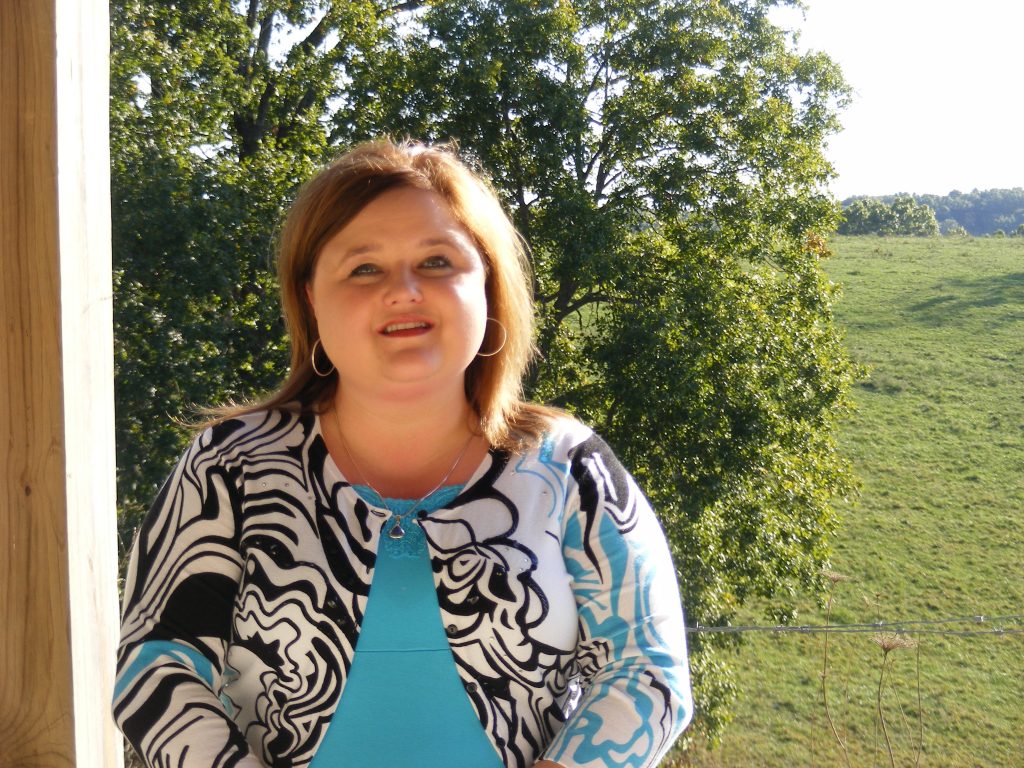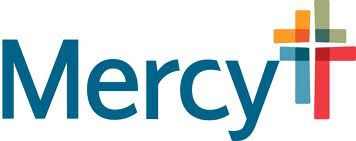
October is National Breast Cancer Awareness Month, so it’s a great time time to START self exams if you’re not already doing them every month and to get anything worrisome checked out.
Shawnna Grigsby, the Breast Health Navigator at Mercy Breast Center in Bentonville, works with women every day who are facing the breast cancer fight. She works closely with them, even going to appointments if that’s something they request. We’ve asked her to tell us a little more about how she helps local women who have just been given bad news and the information she shares with the community that might keep that from happening.
Shawnna, tell us a little about you and your family: My family and I just moved to NWA in April of this year. We lived in Webb City, Missouri for the previous 14 years. My husband Steve retired after 13 1/3 years, from the Oklahoma Air National Guard, he was active duty 7 years prior and currently works at Mercy. We have three sons, Aaron 14, Patrick 19 and Richard 21, and one grandson Landyn, who is 4 months.
I attended Missouri Southern State University where I earned a Bachelor of Science in Nursing in May 2000. Prior to that I attended the University of South Carolina where I earned an Associate in Arts with Honors. During my nursing career I have worked in the maternal child department, general surgery office where I worked with a physician who specialized in breast surgery, case management and currently as a Breast Health Navigator.
What led you to start working with women diagnosed with breast cancer? I grew up around women’s health and women’s health issues. My grandmother a retired RN, worked labor, delivery and postpartum the last 20 plus years of her career, and prior to that she worked in general surgery. My mother is a mammography tech. I was always hearing about women’s health issues as I grew up.
I followed in my family’s footsteps, so to speak. I worked at St. John’s Breast Center while I was in nursing school. Six months out of school I was blessed to be offered a position with a general surgery group and worked closely with breast patients. As time evolved, one physician limited his practice to primarily breast surgeries. I was given the opportunity to assist with his high risk breast patients, help initiate BRCA testing within his clinic and work closely with women who are facing a very difficult diagnosis. I worked in case management for about 1 ½ years and then came back to my passion of women’s health. I have found that all my previous positions have made a great blend of experience for my Breast Health Navigator position.
Will you tell us a little about your job as breast health navigator at Mercy? As a breast health navigator, I assist women who have abnormal mammograms set up surgical consult appointments and assist with biopsies. I provide emotional support and education during and through-out diagnosis and treatment. I am a central point of contact for the patient regardless of where they are at in their treatment plan. I attend appointments with patients at their request. I help navigate the patient through biopsy, diagnosis, treatment and into survivorship.
What is the most rewarding part of your position? The best part of being a breast health navigator is the connection you make with patients and families. You are blessed to be a very small part of helping them through a very scary, difficult time. You really get to see them grow and complete challenges that at times seemed impossible to them, and watch them grow into survivors.
How important is it for me to do a breast self exame (BSE) every month? BSE is very important; it can literally save your life! Women should start doing a monthly BSE at age 20. It is best to perform your exam after your monthly cycle. A woman should become familiar with how her breasts look and feel. It may be helpful to have a notebook and draw what you feel in each breast so you will remember from month to month. This is especially helpful when you start doing BSE. If she notices a change she needs to report it to her doctor immediately.
Just to put the importance of BSE in perspective, a women who regularly performs BSE and finds a lump, it on average is about the size of a dime. Women who occasionally perform BSE and find a lump, on average it is about the size of a quarter. A lump found by accident, averages about the size of a fifty cent piece.
As women we tend to take care of our husbands, children, friends and family first, then ourselves. I encourage all women to take 15 minutes a month for yourself and your BSE. It could save your life.
What should I look for/what are some of the signs of cancer? You should look for a lump, hard knot or thickening. This can be in the breast or axilla (underarm area). Pain, nipple discharge, nipple inversion (pulling in of the nipple), dimpling or puckering (pulling in on other parts of the breast) need to be looked for. A rash on the nipple or itchy scaly sores on the nipple, areola or breast needs to be reported to your doctor. A change in the size, shape or movement of the breast needs to be reported.
For instance, if you bend over if one breast moves/hangs differently than the other breast; report this to your doctor. Swelling, warmth redness or darkening of the breast needs to be reported immediately. If you notice any changes please report if promptly to your physician. While most lump and changes turn out to be from a benign process (non cancerous), that can only be determined by your doctor and testing that is ordered.
It is much better to err on the side of caution, than to look back and wish you would have.
When should I start getting a mammogram if I have a history of breast cancer in my family? The American Cancer Society recommends women with a strong family history or a BRCA 1 or BRCA 2 genetic mutation should start having mammograms at age 30. Be sure to discuss your family and personal history with your health care provider so the best plan of care can be made for your individual situation.
What if I don’t have a family history? Women who are not high risk should start having annual mammograms at age 40.
How can I lower my risk? Research has shown there are factors that women can control to help lower their risk of breast cancer. 1) Maintain a healthy weight and exercise on a routine basis 2) limit alcohol consumption 3) breastfeed if possible 4) limit post menopausal hormones 5) avoid environmental pollutants 6) avoid tobacco.
Is there any new research about breast cancer you can share? There is new research being conducted as we speak. The Sister Study is one long term study that is looking at 50,000 women who have a sister diagnosed with breast cancer. The study is looking at environmental and genetic factors and the affect they may have on developing breast cancer. They also have an off shoot from the original study called Two Sister Study. It is looking at the genetic and environmental effects on breast cancer development, but it is looking specifically at the sister of women diagnosed prior to age 50. It is also including genetic data from parents.
Genetics are always evolving. I always compare genetics to a computer, what is new and state of the art is updated within 6 months. Currently there are two known genes BRCA1 and BRCA 2 that are linked to hereditary breast and ovarian cancer syndrome. Research is continually working to link other genes.
The National Children’s study, which some of you may be participating in, even talks about the possibility of the study, long term, shedding some light on environmental factors that may be linked to the development of breast cancer.
There are literally hundreds of studies and clinical trials being conducted that deal with breast cancer treatment, prevention, diagnosis, genetics and causative elements.
How can I manage my fears that I might get breast cancer? I often worry about it: First of all knowledge is power. We have all heard the statistic that 1 in 8 women will develop breast cancer in their lifetime. That can be a frightening statistic when you think of all the women you know. There are things that we cannot change, for instance our family history or our genetic make-up, but with the knowledge that you may fit into a higher risk category you can be vigilant about things you can control and be proactive in your care.
Talk to your doctor about your history and follow their recommendations. Make sure you take time for yourself and do a monthly breast self exam and make and keep your appointment for your annual clinical breast exam and your mammogram.
All women need to focus and what they can do to help prevent breast cancer, these things include: 1) maintain a healthy weight 2) regular exercise 3) limit alcohol intake 4) breastfeed if you are able 5) stop smoking 6) avoid known environmental pollutants and 7) healthy well balanced diet.
All women also need to focus on your routine screenings. Make sure you do the monthly breast self exam. Make and keep appointments for your annual clinical breast self exam and annual mammogram.
By learning your specific risk , and using that knowledge to make good choices and be proactive in your health care, you are putting yourself in the best situation possible. Not only to help decrease the risk of breast cancer, by managing the things you can control, but also putting yourself in a position to have early detection if something does change or show up.
Note from the mamas: This post was previously published on nwaMotherlode, but we brought it back this month for the good information from Shawnna.

